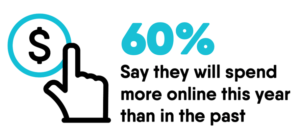Marketing is a fast-paced world where things are constantly growing and evolving, including gender diversity in the field itself. Organizations like The Alliance for Women in Media (AWM) have helped support this advancement by connecting, recognizing and inspiring women across the media industry. The Dallas/Ft. Worth branch of AWM has been providing educational, networking and professional development support and growth opportunities for over three decades. Each year the group holds an Awards of Excellence Gala to recognize outstanding individuals in the field.

Award-Winning Talent at Mindstream Media Group
We’re proud to have several of this year’s nominees on our team.
- Agency Digital Account Manager – Bradi Slovak
- Traffic Management – Briana Whitten, Kelly Duncan, Melissa Wolf, Katey Smart, Kimberly Shafer, Bradi Slovak and Elizabeth Flower
- Regional or National Spot Broadcast Planner – Kimberly Lockett
- Regional or National Spot Broadcast Buyer – Briana Whitten
- Media Director or Media Supervisor – Melissa Wolf
- Local Agency Rising Star – Elizabeth Flower
Congratulations to all the nominees as well as the winner of the Regional or National Spot Broadcast Buyer award, Briana Whitten. Briana is responsible for supervising and managing all client buys for around 15 clients across the search, social, programmatic and broadcast buying teams. She is also a broadcast buyer for 10-15 markets across the U.S. and Canada and has been part of the Mindstream family for nearly 11 years. While she has had the pleasure of working for many amazing women throughout her career, Briana credits Melissa Wolf, Mindstream’s VP of Buying Operations as a strong role model that has helped hone her skills.
In the last year, Briana has been busy creating internal processes and training team members to use the project management software that keeps everything running smoothly at Mindstream Media Group. In her spare time, Briana enjoys planning, executing and participating in industry and community events. She’s also involved in several charities including Operation Kindness, The National MS Society and The American Heart Association as well as her church. In addition, she also participates in multiple agency-sponsored charity events including Impact Week, drives to collect necessities for local homeless shelters, the holiday Angel Tree program and initiatives to support local schools and underprivileged elementary students.
Briana finds the continuous evolution of the industry exciting, noting that when she first started back in 2007, the agency wasn’t involved in social media, digital audio, CTV or programmatic buying. Through the years, Mindstream has grown to adapt to the changes in the way people consume media to remain a leader in the industry. One piece of advice she offers someone wanting to pursue a career in media is, “If you can’t roll with the punches and aren’t willing to continually learn, this isn’t the career path for you. However, if you like change, you will thrive in our industry!”
More About Our Mindstreamer
Briana was born in Dallas and lived there for the first 12 years of her life. Then her family moved to a small town north of Pittsburgh, PA, where she lived until graduating from Penn State in 2007. When she couldn’t find work in Pittsburgh due to the recession, she packed up her car and headed back down to Dallas. She found a job as a Media Buying Assistant almost immediately and the rest is history!

When she’s not helping fast-forward business for Mindstream clients, Briana enjoys spending time with family, decorating the home they built this year, football (college and NFL), traveling and any Jeep-related activities. In 2018 she gained a stepdaughter, Addison (13) when she and her husband (Michael) were married. She’s also mom to two spoiled rotten rescue dogs, Brady (Shih Tzu mix) and Toula (American/English bulldog mix). Fun fact: Briana was a Jr. Dallas Cowboys Cheerleader when she was younger and performed at two Dallas Cowboys half time shows.
Keep an eye out for future employee spotlights featuring the vast array of talent that makes Mindstream Media Group a media center of excellence.

















![[Video]: Influencing the Customer Journey](https://mindstreammediagroup.com/wp-content/uploads/2020/10/CustomerJourneyFeaturedImage-scaled.jpg)
